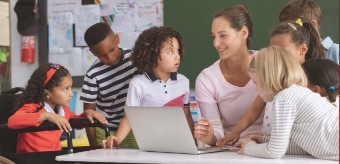Equitable and inclusive education practices are necessary for all learners to develop and prosper and are critical in building a society that is inclusive of all people and their basic legal, civil and human rights. These practices promote the best interest of the learner, dignity, social cohesion, and a sense of belonging. A complete and equitable school experience includes active participation in learning and positive interactions with peers and others within the school community.
Inclusive education is put into practice within school communities that value diversity and nurture the well-being, quality of learning, and future success of each of their members. Inclusive education is based on learners’ diverse identities, languages, strengths, needs, interests, and abilities, which overlap to create a unique experience. It is carried out through a range of public and community programs and services available to each learner and is the foundation for ensuring an inclusive New Brunswick society.
Equitable education: practices that enable every learner to reach their full potential. This requires recognizing and removing the systemic barriers that prevent some learners, including those from historically marginalized populations, from receiving adequate support to access the same opportunities, learning, and future success as other learners. For the learner, these practices promote an approach that considers the uniqueness of the learner's experience and diverse learning needs.


 The School’s Response to a Threat of Suicide
The School’s Response to a Threat of Suicide Policy 322 - Inclusive Education
Policy 322 - Inclusive Education